Many pages of the life of the founder, co-author, vocalist, and guitarist of the extraordinary band The Beatles, who opened the doors to British rock, have been documented and analyzed as historical events. However, the musician—who preferred to call himself an artist in both a direct and broad sense—gained unique worldwide fame not only for his musical contributions. A sharp wit and incorrigible free thinker from childhood, Lennon was distinguished by rebellion, which became his lifestyle. The search for harmony and destruction were equally present in his biography, along with a drive to expand consciousness and undergo psychological therapy.
One of the key figures of the 20th-century counterculture, Lennon made his creativity a tool of protest, becoming the voice of the left opposition. The name of the performer, composer, poet, artist, writer, and activist is written into the struggle for peace, freedom, and equality. The author of anti-war anthems and political manifestos returned his Order of the British Empire to the queen and dared to oppose the American president. He stirred public opinion and inspired supporters with personal courage, unafraid to pay for his views with his career and life. Perhaps the explanation for his legendary status lies primarily in this.
Childhood Drama
John Winston, the newborn from Liverpool with Irish ancestry, was named after his paternal grandfather John Lennon and British Prime Minister Winston Churchill. The boy was born on October 9, 1940, in the port city in northwest England to sailor Alfred Lennon, who was at sea when his son was born. At 9 Newcastle Road, where John’s mother Julia lived with him, financial checks regularly arrived from his father—until Alfred deserted in February 1944. When the sailor returned six months later, pregnant Julia refused to accept her lawful husband.
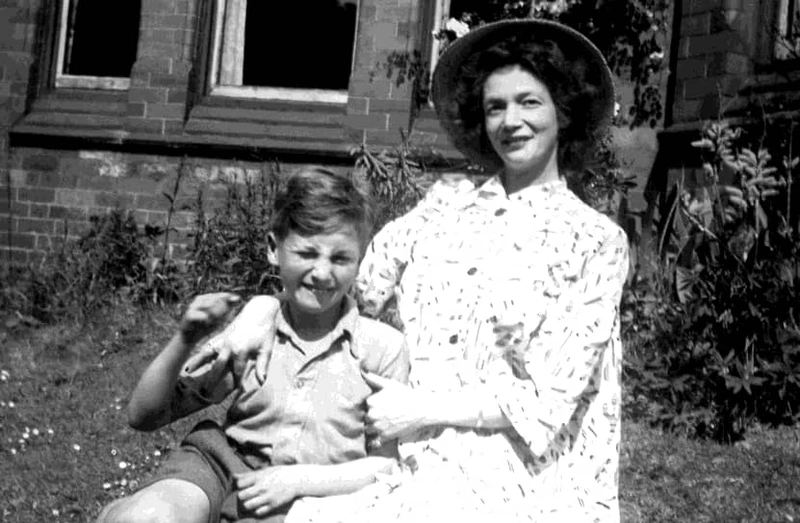
John with his mother
In 1946, the father visited and took his son to Blackpool, planning to secretly emigrate with John to New Zealand. Worried, the mother and her partner caught up with them and argued with the father, who gave the five-year-old a choice of whom to stay with. Twice choosing the father, little John burst into tears when his mother left, and ran after her. To spare the child further anguish, Lennon’s parents agreed that John would live with his mother. After two social service complaints against Julia, the mother gave custody to her childless older sister Mimi, who lived with her husband in the respectable Liverpool suburb of Woolton. At their home on 251 Menlove Avenue, Lennon spent his childhood and youth, and for the next twenty years had no contact with his father.
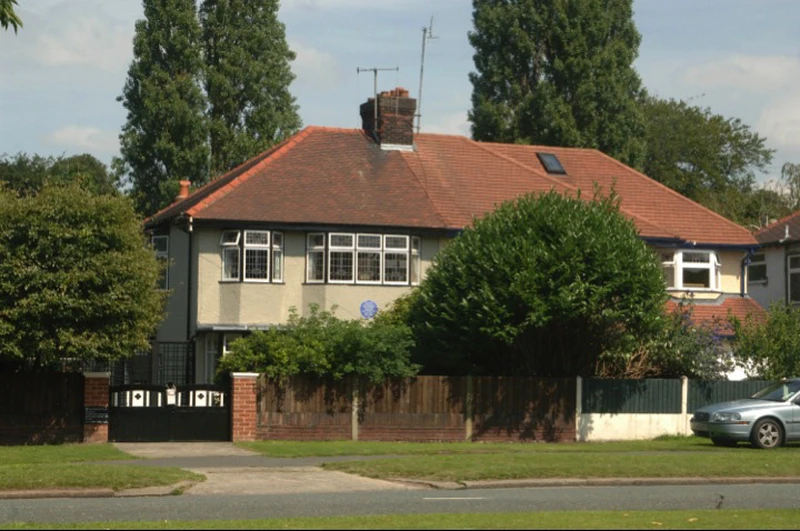
House where John spent his childhood in Liverpool
Parents Are Not Gods
“In my family, there were five women,” John Lennon wrote in his adult autobiography. “Strong, smart, and attractive, they were sisters to each other, and my mother was the youngest and the least adapted to life. This was my first feminist education. And my main difference was my lack of attachment to my parents, and I projected this experience onto my friends. I could tell them that parents aren’t gods, and my opinion was authoritative, because I didn’t live with my father or mother. From childhood, I was a rebel, irritated by everything, but I was always looking for love and recognition.”
Reflecting on his youth, Lennon recalled that the parents of all the boys around him, including Paul McCartney’s father, advised their sons to stay away from John because he did not recognize authority and would lead their well-off children astray. “That’s how it was,” the “troublemaker” realized, “I disturbed the peace of every family I knew. Maybe it was envy that others had a real home, which I didn’t.” At the same time, John was not lacking love and care from relatives. He saw his mother and cousins almost daily; an uncle gave him a harmonica, and his mother bought him his first acoustic guitar. However, the instrument was kept at his mother’s home because his aunt didn’t consider music a promising pursuit and tried to instill John’s interest in books.
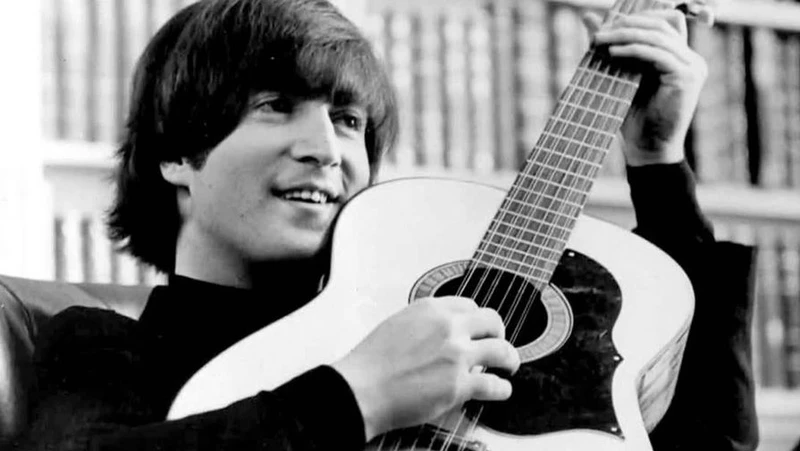
Excessive Ambitions
At Quarry Bank Secondary School in Liverpool, where John Lennon studied from 1952 to 1957, he earned a reputation as a prankster. Witnesses described him as “carefree,” “good-natured,” “cheerful,” and “frivolous.” In the homemade school newspaper *Daily How*, the artistically gifted student published biting caricatures, and in a school essay on “What I Want to Be,” he wrote, “Happy.” When corrected that he misunderstood the task, young John thoughtfully replied, “You don’t understand life correctly.” Teachers noted that he “suffered from inappropriate ambitions and misdirected his energy.”
Educators pointed out the student lacked diligence and did not fully realize his potential. Lennon’s poor behavior strained his relationship with his aunt. Only through her intervention and support from the school principal was Lennon admitted to Liverpool College of Art after failing his exams. However, there he continued to receive behavioral warnings and was constantly threatened with expulsion. According to a classmate—later Lennon’s first wife and mother of his eldest son Cynthia Powell—John was expelled in his penultimate year for failing to complete any coursework that year. His priority by then was music: he formed his first skiffle band, The Quarrymen, at age 15, which soon evolved into The Beatles. It was at one of their shows he met Paul McCartney, whom he invited to join.
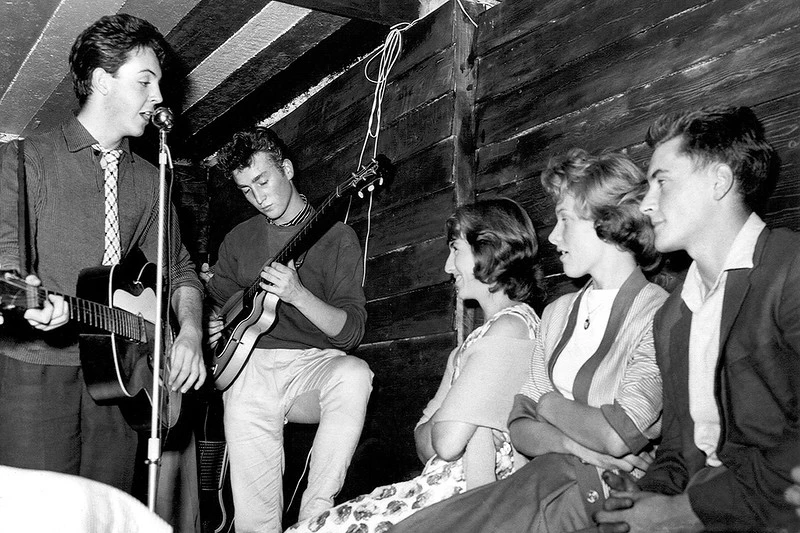
First performances of John and Paul
Anger and Inspiration
At that time, Lennon (wearing a narrow tie, vest, cropped drainpipe trousers, and suede platform shoes) resembled a member of the 1950s Teddy Boys youth subculture, who challenged society with their “informal” appearance. But Lennon’s true challenge came with the 1958 death of Julia, his 44-year-old mother of four children, who was struck at an intersection by a car driven by a drunken policeman who didn’t know how to drive. Aunt Mimi called the off-duty but unpunished driver a murderer (he later became a postman delivering fan mail to the “Liverpool Four”). For two years, Lennon drowned his grief in alcohol and often initiated fights to vent his “blind rage.”
His mother’s death, which occurred before John turned eighteen, deeply traumatized him but also brought him closer to Paul McCartney, who also lost his mother in youth. Paradoxically, this trauma brought Lennon much creative inspiration. The Beatles’ repertoire included the song “Julia” in her memory. Two of Lennon’s solo songs from *John Lennon/Plastic Ono Band*—the singles “Mother” and “My Mummy’s Dead”—were also dedicated to his mother. In 1963, he named his firstborn Julian in her honor (John Lennon’s children were by his first wife Cynthia Powell and second partner Yoko Ono).
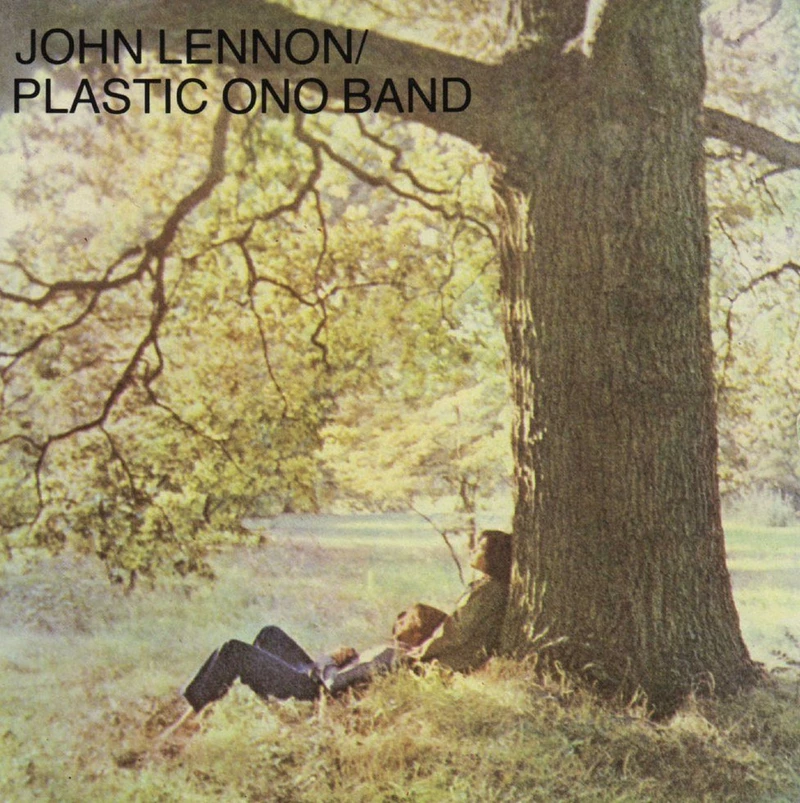
“Personal Elvis”
John Lennon was, according to McCartney, The Beatles’ “personal Elvis” in their youth. Although the band’s early pop songs didn’t need deep lyrics, since sound mattered most then and not wordplay loved by Lennon later, the members adored him. McCartney cited Lennon’s wit, intellect, and charisma as reasons for the musicians’ respect: “John was the eldest and the sharpest of us all—that was a leader’s trait.” John could mock aristocrats at the Royal Variety Performance by asking the cheap-seat audience to clap while in the expensive royal boxes, including the Queen Mother, he rattled his jewelry.
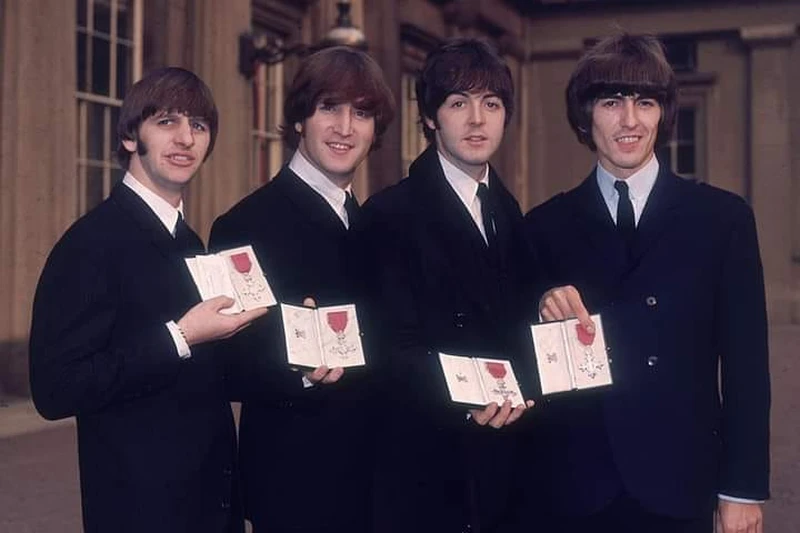
The Beatles receiving the Order of the British Empire
Yet the establishment was not offended: in 1965, The Beatles were honored by the British establishment and received the Order of the British Empire on the Queen’s birthday. Between continuous tours (due to work, Lennon—like his father—missed the birth of his son), filming, and songwriting, Lennon prepared two collections of miniatures in the 1960s—*In His Own Write* and *A Spaniard in the Works* (the translation reflects the author’s pun style). A busy schedule and a chance meeting with drugs opened Lennon’s access to LSD. He gained weight and later called that time the period of the “fat Elvis.”
LSD and Pacifism
In 1966, Lennon gave his first scandalous interview, claiming The Beatles were “more popular than Jesus,” predicting the end of Christianity. The statement caused no public resonance in England, but in the USA, following public burnings of Beatles records, Ku Klux Klan protests, and personal threats to Lennon, the band’s concert activity was halted. After their last concert on August 29, 1966, John starred in his only feature film without The Beatles: the anti-war satirical comedy *How I Won the War*. Overall, Lennon appeared as himself in 35 feature films and 20 TV programs.
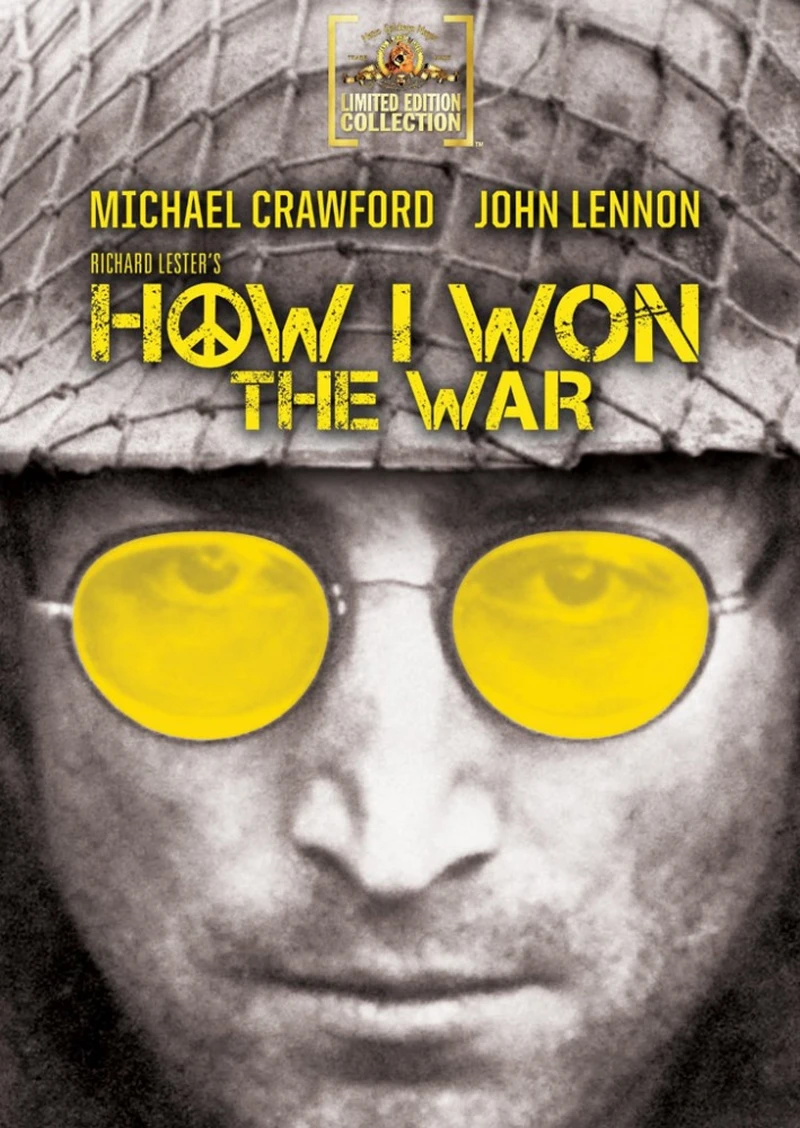
According to Irish writer Ian MacDonald, Lennon’s psychedelic drug use during this period brought him close to “losing his sense of identity.” Another dimension of his creative stimulation was songwriting, called “remarkably inventive” by *Time* magazine critics. After releasing the single “Strawberry Fields Forever” and the landmark album *Sgt. Pepper’s Lonely Hearts Club Band* (a turning point for The Beatles), Lennon declared himself a songwriter with meaningful verses contrasting the simple songs from the band’s early period written by Lennon and McCartney. His pacifist stance in the song *All You Need Is Love* reached a 400-million international audience via the satellite broadcast *Our World*.
There’s More
The news of the death of The Beatles’ Liverpool manager Brian Epstein caught John Lennon and the band members during transcendental meditation training. The Indian guru’s technique, using a personal mantra to unlock potential and reduce stress, did not prevent Lennon from foreseeing future troubles. “I was scared for the band’s fate,” the leader recalled, “because we only knew how to play music. So, is that it?” The first post-Epstein project was organized by Paul McCartney. The TV film *Magical Mystery Tour* became The Beatles’ first critical and audience failure, but Lennon’s soundtrack *I Am the Walrus*, inspired by British storyteller Lewis Carroll, was a success.
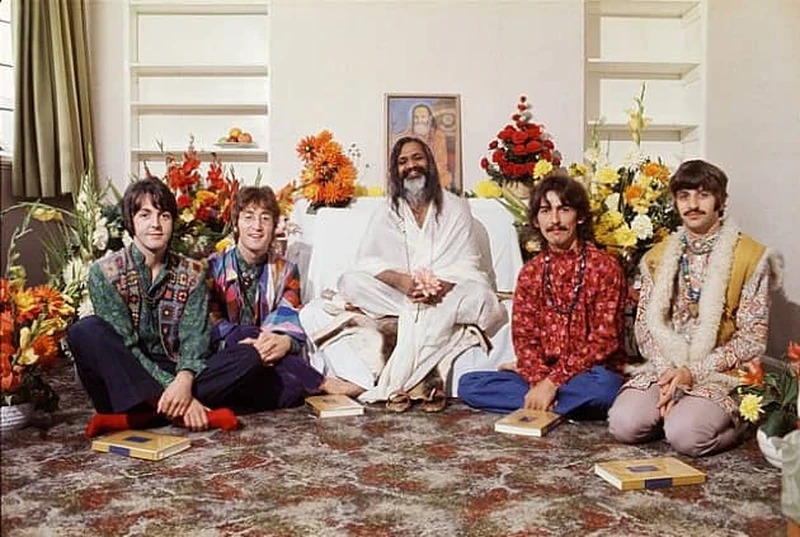
The Beatles returned from India to London with new inspiration and differing views on transcendental meditation. Attempting “creative freedom within a business structure,” as Lennon put it, was the commercial activity of the newly formed Apple corporation, consisting of Apple Records and other subsidiaries. The debut release on Apple was *Revolution*, issued during public unrest and protests. However, Lennon’s pacifist ideas in songs drew ridicule from political radicals. The tension during the *White Album* recording intensified when Lennon broke an agreement not to invite wives and girlfriends to studio sessions. From then on, Japanese artist Yoko Ono was always by his side; musicians later blamed her for the band’s breakup.
What Did He Find in Her?
At the time Lennon met his 33-year-old new partner, he was 25 and knew nothing about the strange Japanese woman except that she was seeking “365 intelligent dups” for a film shoot via a newspaper ad. Meanwhile, Yoko Ono knew well John Lennon’s finances and reminded him of herself whenever possible to secure funding for exhibitions. He gave her money for an art project and soon resonated with the mysterious woman’s conceptual ideas. They became the couple known as John & Yoko. They tried to merge into one: wearing matching white suits, having the same hairstyles parted in the middle, and combining their faces in a joint film. Their art projects included releasing 365 white balloons into the sky with the inscription “You Are Here,” a 30-minute short film with a smiling Lennon, and a 20-minute “Self-Portrait” miniature showing close-ups of John’s intimate parts.

Married in 1969, Lennon and Ono depicted scenes from their honeymoon in the *Bag One* lithograph series, where 8 of 14 images were banned and confiscated as obscene. Lennon’s work in this period went beyond The Beatles: the creative couple recorded three experimental music albums, formed the Plastic Ono Band, released the live album *Live Peace in Toronto 1969*, and recorded three John Lennon songs: “Instant Karma,” “Cold Turkey” (a documentary testimony to withdrawal from heroin), and “Give Peace a Chance” (an anti-Vietnam War anthem combined with Yoko and John’s “bed-in” peace protest in a luxury hotel room). Alongside the avant-garde artist, Lennon himself felt like an artist, which he indeed was. An unusual experience for the couple was Ono’s arranged affair with their secretary May Pang: by old Japanese tradition, the wife should choose a lover for the husband if he lost interest. After living apart for a while, Lennon returned to his second wife, leaving his confused lover with no explanation.
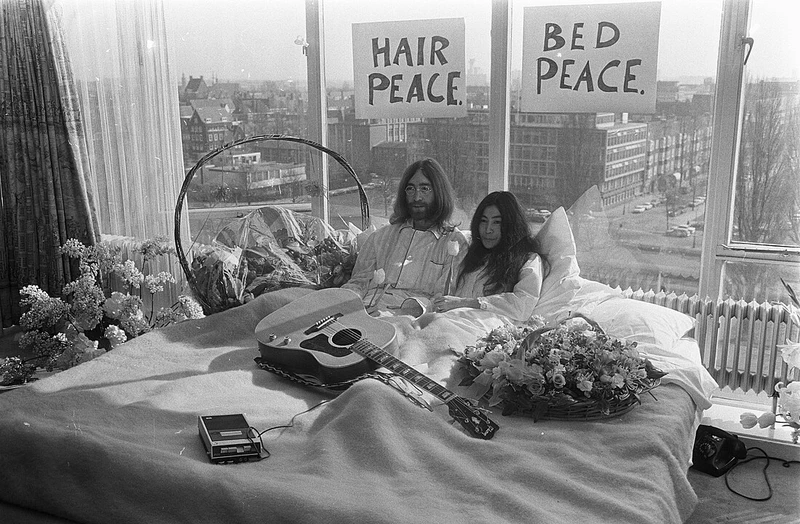
John Lennon and Yoko Ono on the first day of the “Bed-In for Peace” protest
Release from Pain
Another major break in Lennon’s life was his departure from The Beatles in 1969. He only regretted agreeing to delay the public announcement (since the band was tied to business obligations and a new album promotional campaign). Lennon felt betrayed when Paul McCartney, the “cream” of the breakup, announced his departure first, using it to promote his solo album. “I created this band, so I have to break it up,” Lennon thought.
He deeply resented McCartney also because Paul disliked Yoko Ono and concentrated power over their joint project in his own hands. Despite Lennon’s attacks on McCartney in the song “How Do You Sleep” and a three-year media feud with his former friend, this creative duo remains the most successful in pop culture history. John Lennon and Paul McCartney later drifted together and apart, with John summing up his complicated feelings as: “In my career, I had to work with two outstanding people—Paul McCartney and Yoko Ono—and that is a worthy choice.”

In 1970, John and Yoko underwent psychotherapy in London and Los Angeles to overcome emotional pain accumulated since early childhood. Lennon released a solo album with confessional lyrics that, though limited commercially, were well received by critics. Lennon’s vocal performance in the song “God” was called “arguably the best in rock history.” In “Mother,” John told how abandoned he felt in childhood, while “Working Class Hero” became a fierce critique of the bourgeois social system (due to the line “You’re still fucking peasants,” the song was banned from radio). The fighter supported an underground publication and advocated a world without religious denominations, rejecting the idea that “my God is more important than yours.” Protesting his country’s invasion of Nigeria and condemning UK support of the US invasion of Vietnam, Lennon returned his previously awarded Order of the British Empire to the queen.
America vs. Lennon
After moving to New York in 1971, Lennon and Ono became active participants in the American left-radical movement. The Nixon administration’s “strategic countermeasure” against Lennon’s anti-war protests was an attempt to deport him. The legal battle lasted four years, and until 1976, the US immigration service denied Lennon the right to live overseas. Lennon’s double album *Elephant’s Memory* addressed women’s rights, interracial relations, the UK’s role in the Northern Ireland conflict, and his struggles obtaining a green card. The album’s commercial failure was expected. Critics called Lennon a “pathetic aging revolutionary,” and two charity concerts in New York for psychiatric hospital patients were the musician’s last full performances.
Due to death threats during performances, John Lennon was forced to stop touring. Unlike Yoko Ono, US authorities long denied him residence permission, and after performances for Native American rights, youth leader John Sinclair’s release, and prison reform, Lennon was ordered to leave the country within two months. Lennon’s prolonged depression was relieved by the birth of his second son Sean on October 9, 1975. After this joyful event, the father of two, who had barely participated in raising his first son
Julian (he planned to reconcile with his elder son but never did), decided to use this chance fate gave him to be a good father, at least for his younger son Sean.
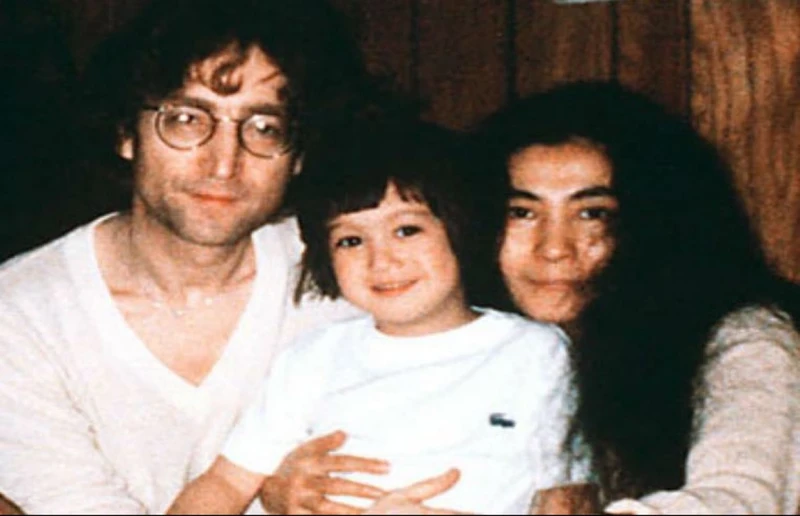
Pause or End?
The musician decided to pause his career and devoted the next five years to his family. During the creative break, he only painted and wrote his autobiography. In summer 1980, Lennon enjoyed a pleasant vacation in Bermuda and sailed on a yacht with his young son. Lennon’s music at that time reflected his satisfaction with family stability. New recordings were released posthumously in 1984. Lennon’s life ended on December 8, 1980. He was killed by fan Mark Chapman, to whom he had given an autograph the day of his death. The murderer spared no expense for the photographer who captured the moment of the musician signing the album for him. When John and Yoko returned home around 10:50 pm, having let the limousine go at the entrance to the Dakota building’s archway, Chapman, waiting near the house, fired a revolver at Lennon’s back and shoulder.
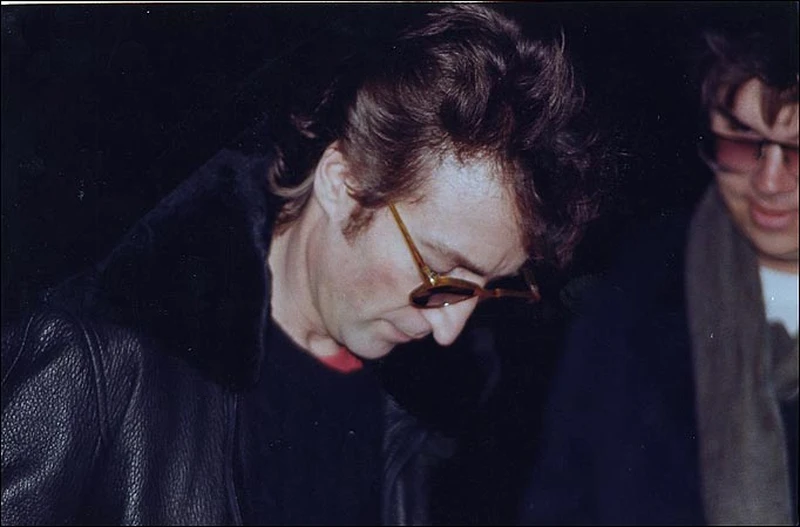
Lennon gives autograph to his murderer Mark Chapman (right)
“I’m in pain,” John managed to say to the concierge before losing consciousness. The bullets fired at close range struck Lennon, piercing his aorta, and he had no chance of survival. After arriving at the hospital at 11:15 pm in a police car with the bloodied murder victim, doctors declared John Lennon dead. The next day, Yoko informed fans that there would be no funeral, and after cremation scattered his ashes in Central Park near their home, where his 91-year-old widow still lives. Later, the “Strawberry Fields” memorial appeared at the site of his resting place in New York. The murderer, serving a life sentence, explained he killed his idol out of jealousy of his popularity and desire for similar fame. Today, the 69-year-old “classified” prisoner at Attica prison, who refuses interviews and photo or video appearances, could have been released under US law after serving 20 years, but remains imprisoned “for his safety” and “public peace.” However, conspiracy theorists have long believed Lennon’s killer would be hidden from the world forever.
